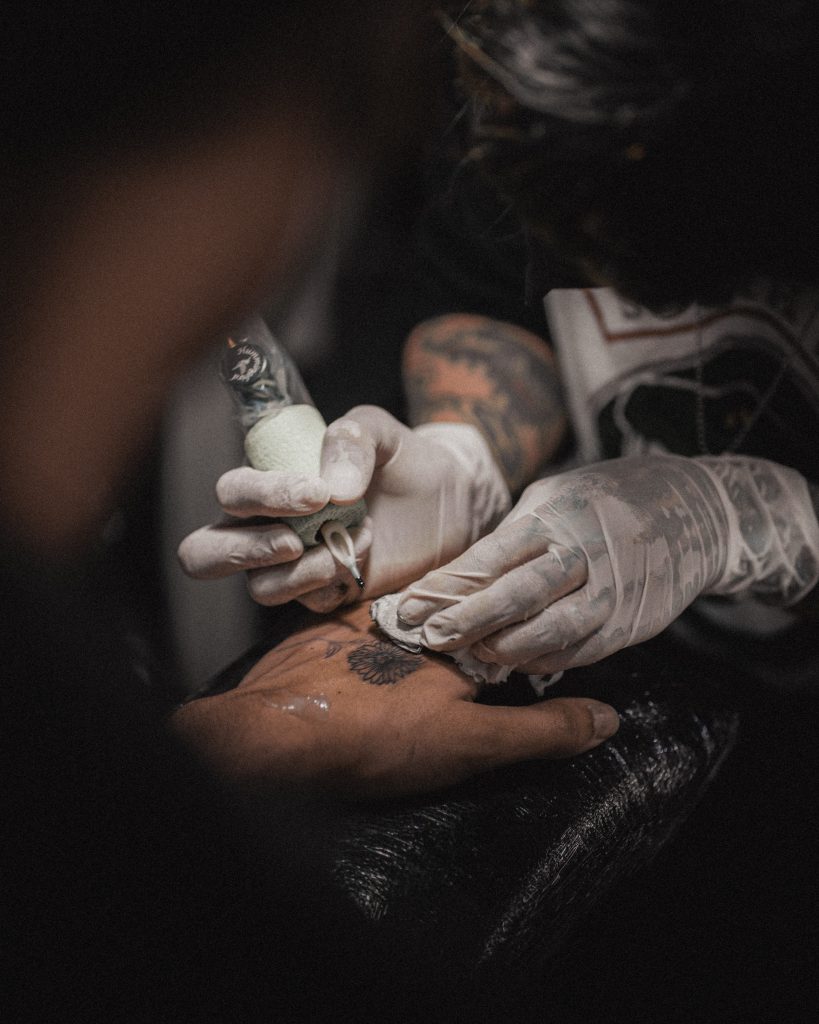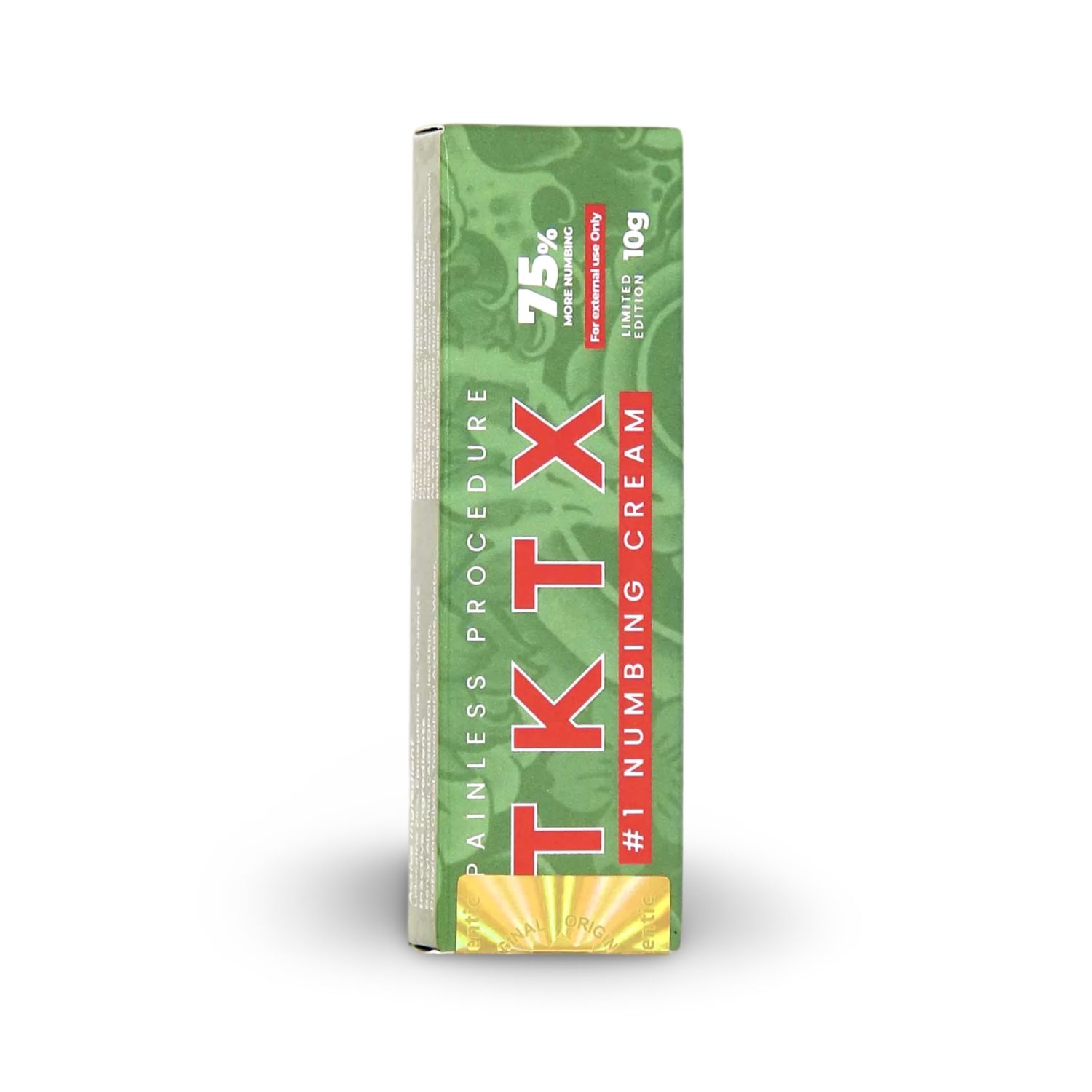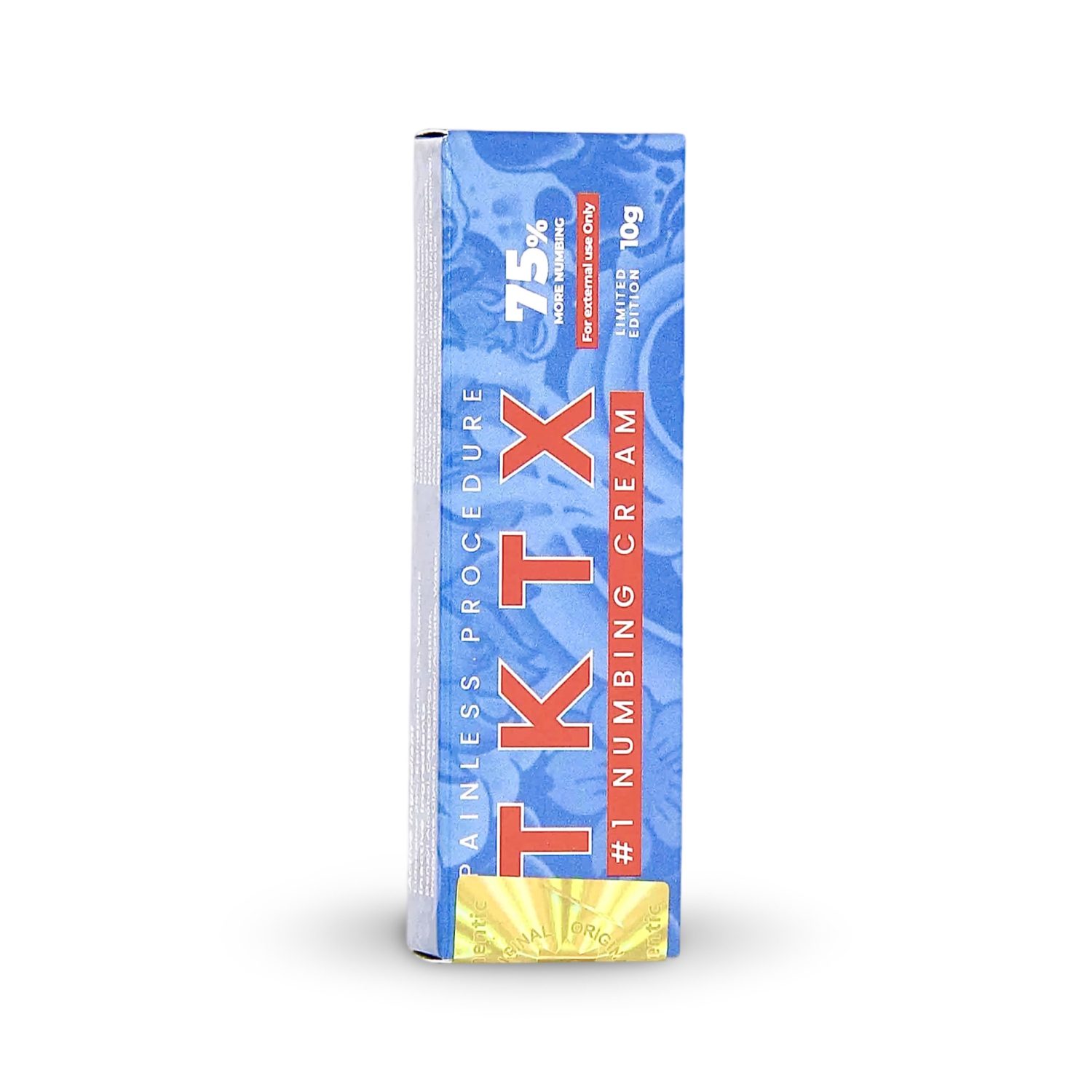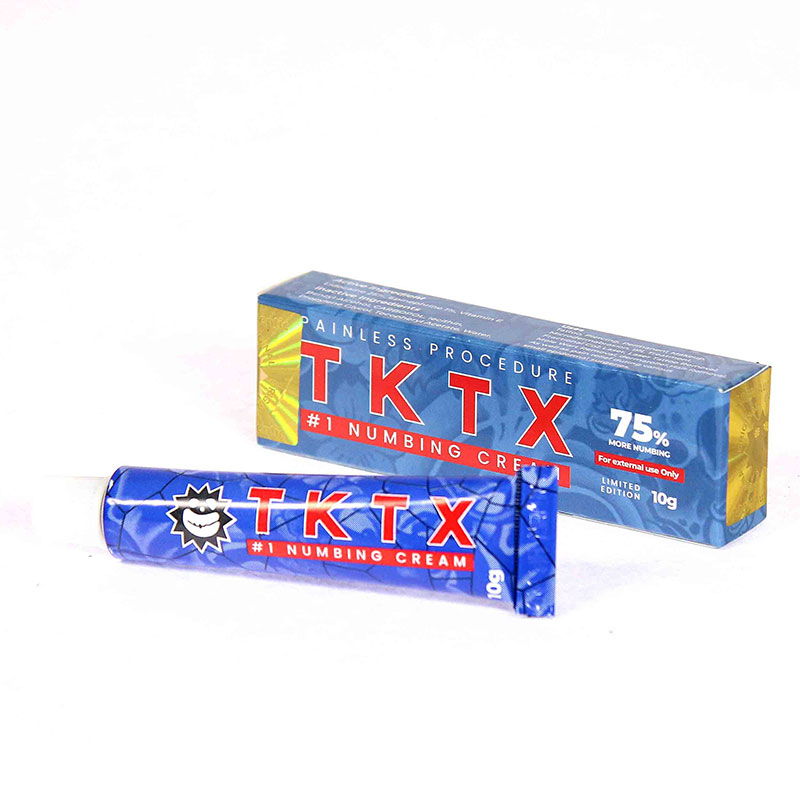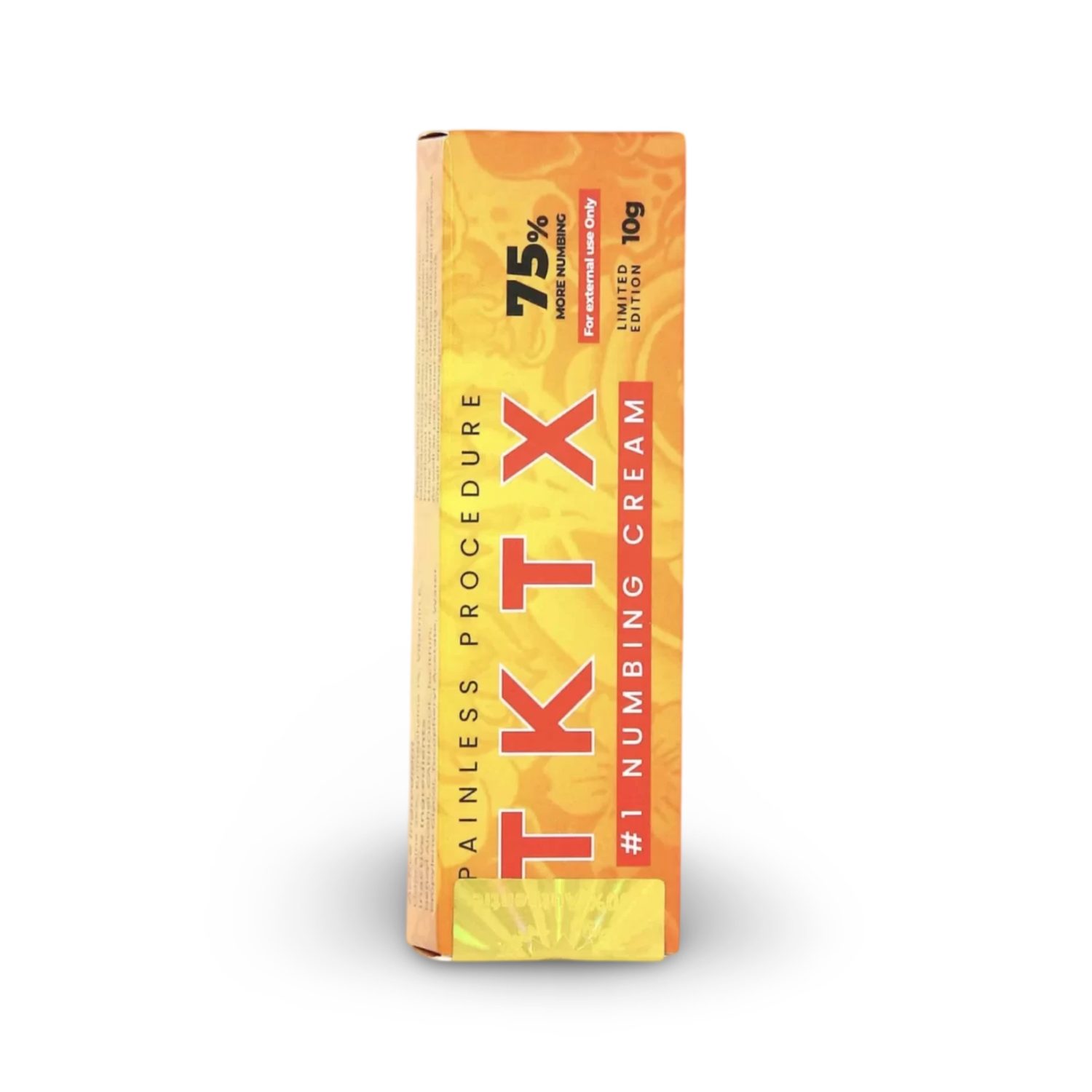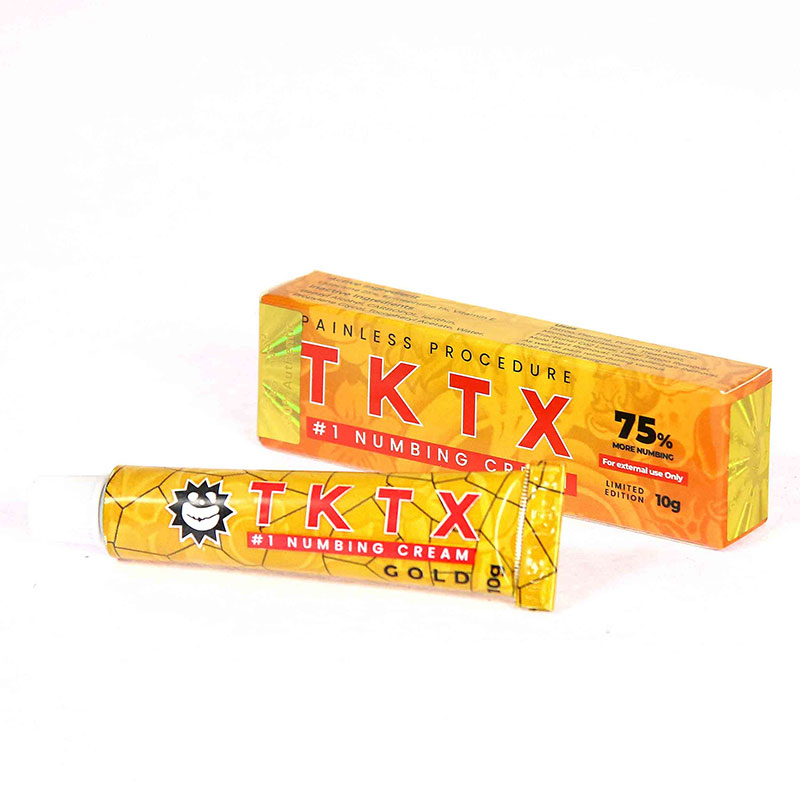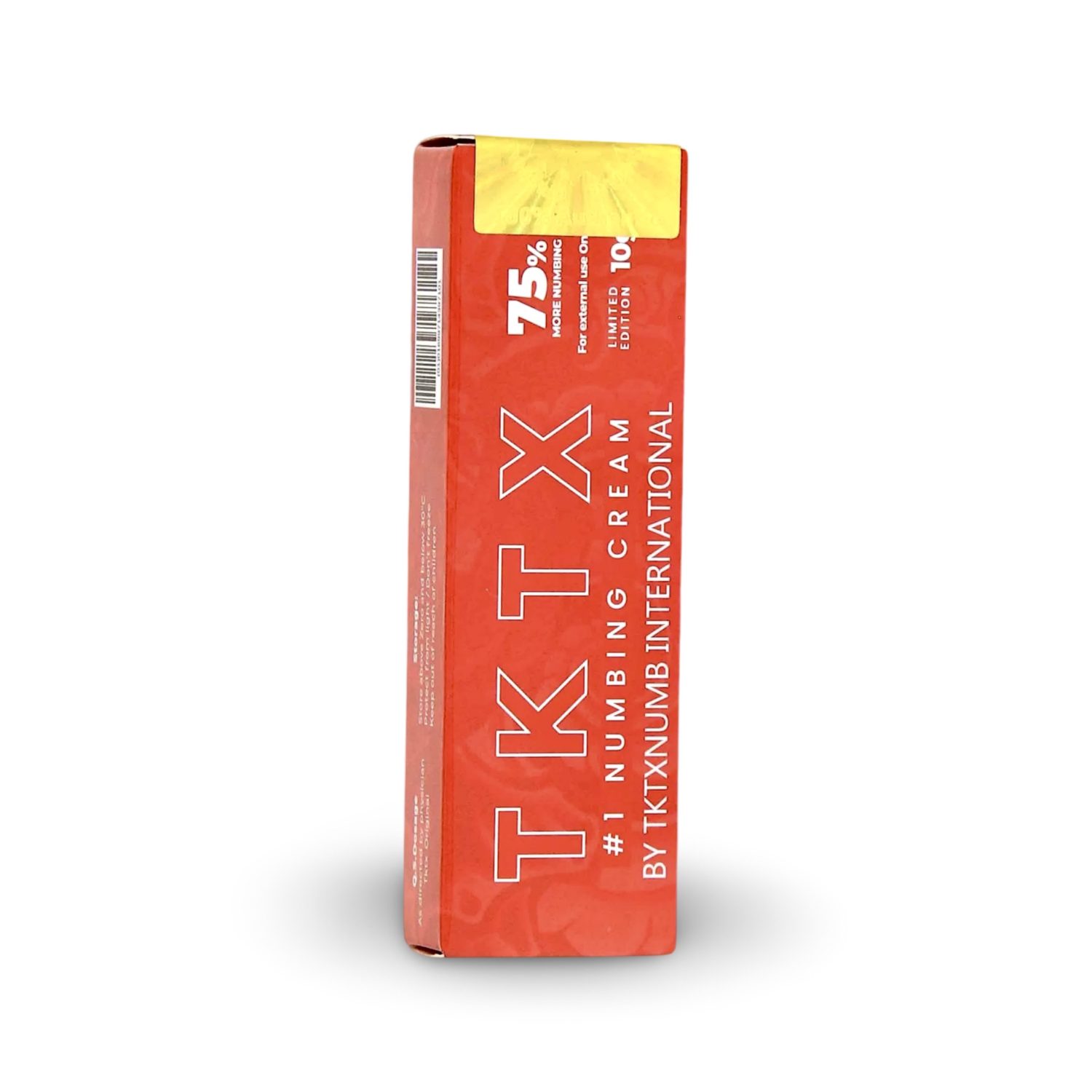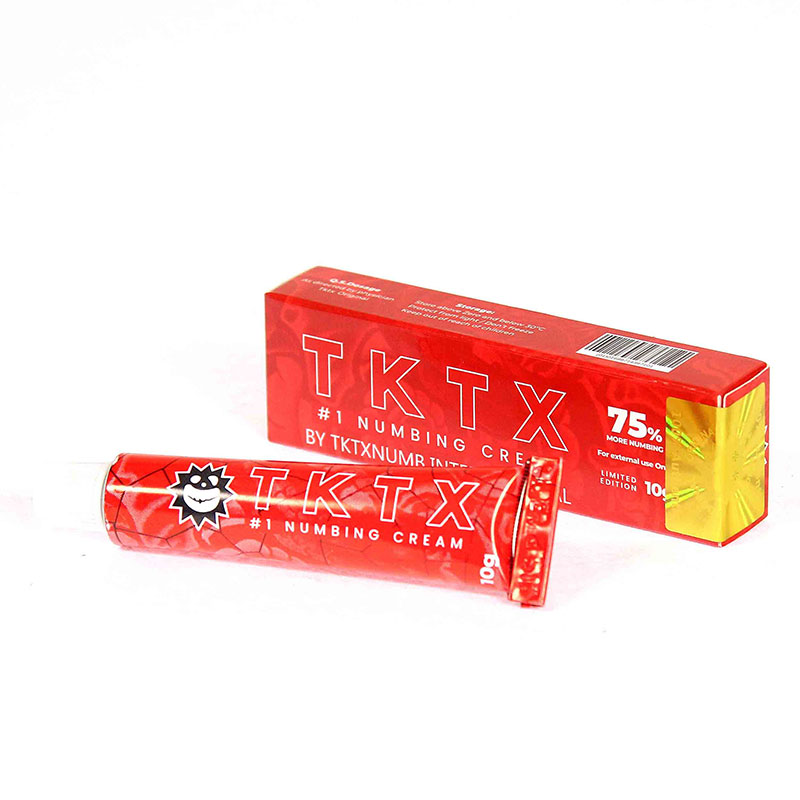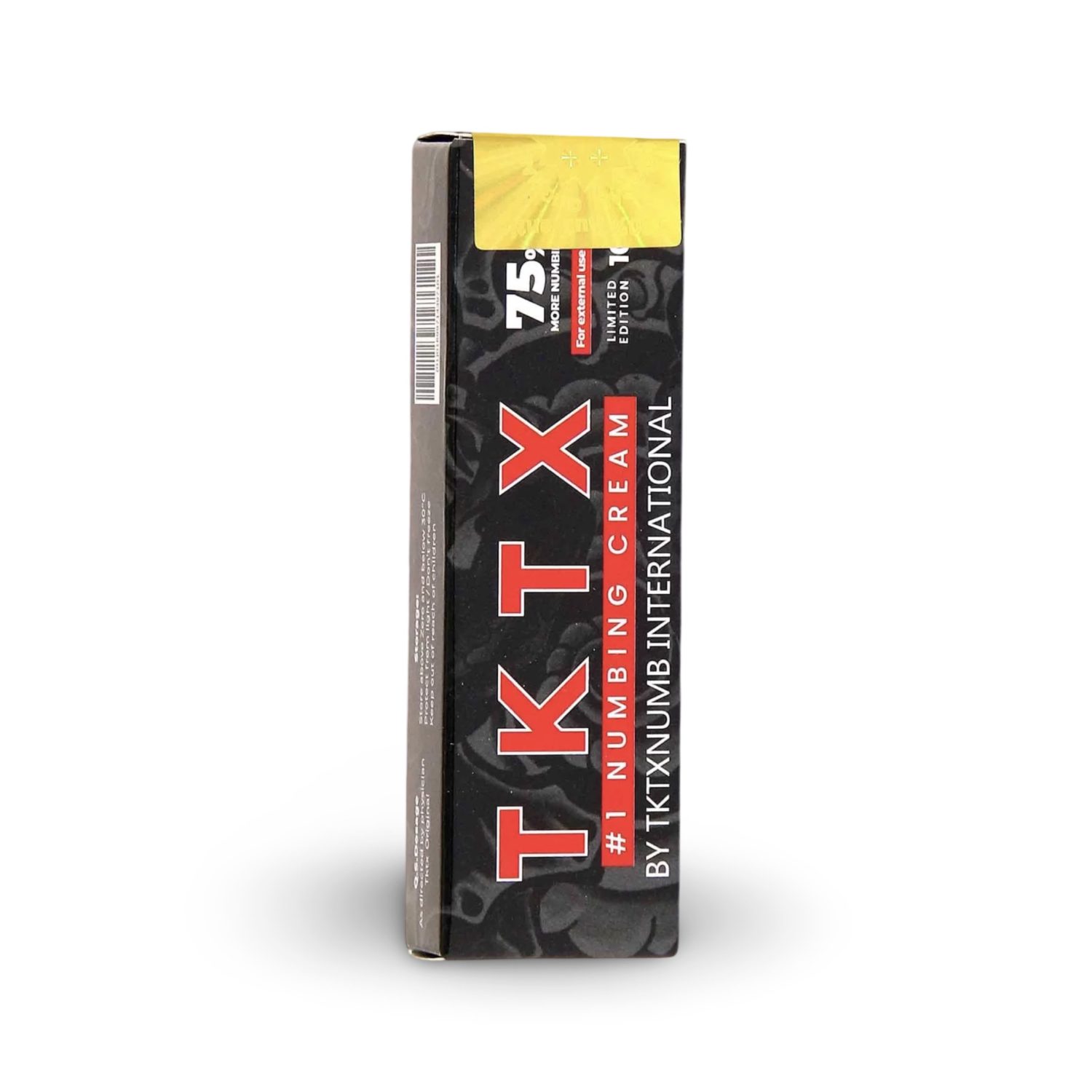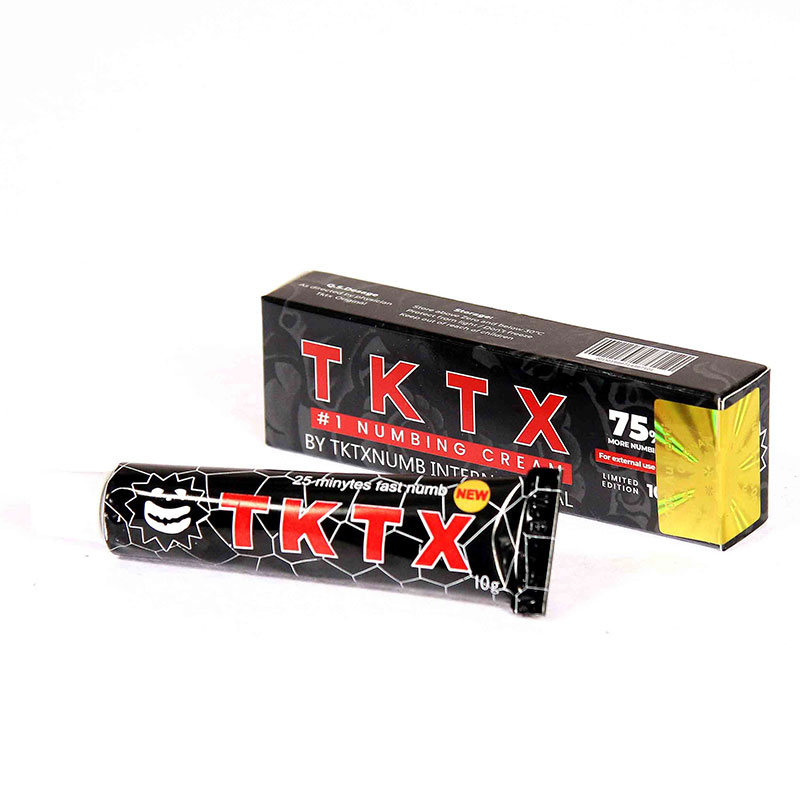Blog
How tattoo numbing creams block pain signals
Tattoo numbing creams are able to effectively block pain signals due to the science of pain perception and the role of local anesthetics. These creams work by temporarily numbing the area where they are applied, providing relief from pain. The ingredients involved in tattoo numbing creams play a crucial role in their effectiveness in blocking pain signals in the nervous system.
Local anesthetics, such as lidocaine and prilocaine, are the key components of tattoo numbing creams. These anesthetics work by blocking the transmission of pain signals from the nerves to the brain. They achieve this by inhibiting the function of sodium channels, which are responsible for transmitting electrical signals in the nervous system. By blocking these channels, local anesthetics prevent the pain signals from reaching the brain, resulting in a temporary numbing effect.
In addition to local anesthetics, tattoo numbing creams may also contain other ingredients that enhance their effectiveness. These may include vasoconstrictors, which help to reduce blood flow to the area, prolonging the numbing effect. Other ingredients, such as emollients and moisturizers, are often included to keep the skin hydrated and prevent dryness or irritation.
While tattoo numbing creams can be highly effective in blocking pain signals, it is important to note that they have limitations. The duration of numbness provided by these creams is temporary and varies depending on factors such as the concentration of the anesthetics and individual sensitivity. It is also important to follow the instructions for use and not exceed the recommended application time to avoid potential side effects.
In conclusion, tattoo numbing creams work by utilizing local anesthetics to block pain signals in the nervous system. By inhibiting the function of sodium channels, these creams provide temporary relief from pain. Understanding the mechanism behind tattoo numbing creams can help us appreciate their effectiveness and potential applications. However, it is important to use these creams responsibly and follow the instructions provided to ensure safe and effective pain relief.
The science of pain perception
Pain, it’s like your body’s own personal alarm system, but have you ever wondered how exactly we experience it? Understanding the science of pain perception is crucial to comprehending how numbing creams like Tattoo numbing creams work in blocking pain signals.
When you experience pain, it is because your body has detected a harmful or potentially damaging stimulus. Nerve endings called nociceptors are responsible for transmitting these signals from the site of injury to the brain. This complex process involves a series of chemical and electrical events that allow us to perceive and react to pain.
Numbing creams such as Tattoo numbing creams contain an active ingredient called lidocaine. Lidocaine works by temporarily blocking the transmission of nerve impulses along the nerves in the area where the cream is applied. It does this by inhibiting sodium channels on the nerve cell membrane, preventing them from generating electrical signals.
By blocking these pain signals, Tattoo numbing cream effectively reduces or eliminates our perception of pain in that area. This allows medical procedures or minor surgeries to be performed with minimal discomfort for patients.
Understanding the mechanism behind how Tattoo numbing creams block pain signals provides valuable insights into developing more effective and targeted treatments for managing pain.
How numbing creams work
To understand how numbing creams work, it’s interesting to explore how they reduce sensations. One popular numbing cream on the market is Tattoo Numbing Cream (Tattoo numbing creams). It blocks pain signals from reaching your brain by interacting with the active ingredients in the cream and your nerve cells.
When you apply Tattoo numbing cream topically, it penetrates the skin and reaches the underlying nerve endings. It contains lidocaine and prilocaine, which are powerful local anesthetics. These compounds work by inhibiting the function of sodium channels in your nerve cells.
Sodium channels are responsible for transmitting pain signals from your body to your brain. By blocking these channels, Tattoo numbing cream prevents the relay of these signals to your central nervous system. As a result, you experience a temporary loss of sensation in that area.
The exact mechanism by which Tattoo numbing cream blocks pain signals is not fully understood. However, studies have shown that it effectively reduces pain during procedures like tattooing or laser hair removal.
In conclusion, Tattoo numbing cream interferes with sodium channels in nerve cells to block pain signals from reaching your brain. This evidence-based approach provides reliable relief from discomfort and allows for more comfortable experiences during medical or cosmetic procedures.
The role of local anesthetics
Local anesthetics, such as Lidocaine, play a crucial role in providing relief and enhancing comfort during medical or cosmetic procedures. Lidocaine, the active ingredient in numbing creams like Tattoo numbing creams, belongs to a class of drugs called local anesthetics. These drugs work by temporarily blocking nerve impulses in a specific area of the body.
When you buy Tattoo numbing cream or any other numbing cream for piercings, you can expect it to contain Lidocaine as one of its main ingredients. This powerful compound inhibits the sodium channels on nerve cell membranes, preventing the nerves from sending pain signals to your brain. As a result, the area where the cream is applied becomes effectively numb.
Tattoo numbing cream has gained popularity due to its effectiveness in minimizing pain and discomfort during tattooing or piercing procedures. It is considered one of the best tattoo numbing creams available on the market today. Its high concentration of Lidocaine ensures long-lasting numbness, allowing individuals to undergo these procedures with minimal discomfort.
If you’re curious about the different pain levels associated with tattoos, we also have an insightful article titled ‘The 8 most painful tattoo spots – Suffer for Art.‘ Discover the spots that may require a little extra bravery during your tattoo journey and gain a deeper appreciation for the art of tattooing.”
In conclusion, local anesthetics such as Lidocaine found in Tattoo numbing cream play a vital role in blocking pain signals and providing relief during medical or cosmetic procedures. Choosing the right numbing cream, like Tattoo numbing creams, can significantly enhance your comfort and ensure a smoother experience during tattoos or piercings.
Blocking pain aignals in the nervous system
Lidocaine inhibits nerve impulses, creating a barrier that prevents the brain from receiving signals of discomfort. This mechanism is crucial in blocking pain signals within the nervous system. When applied topically, numbing creams like Tattoo numbing cream White, Blue, Green, and Black containing lidocaine penetrate the skin and reach the underlying nerves. Lidocaine works by binding to sodium channels on nerve fibers, preventing them from depolarizing and transmitting pain signals.
The efficacy of lidocaine in blocking pain signals has been extensively studied. Research shows that lidocaine blocks both A-beta fibers responsible for touch sensation and C-fibers responsible for transmitting pain. By targeting these fibers, lidocaine numbing creams effectively reduce or even eliminate sensations of discomfort during procedures such as tattooing.
Utilizing a numbing cream like Tattoo can provide significant relief during painful procedures. Before applying any numbing cream, it is important to ensure that it is safe and suitable for your specific needs. Searching for ‘tattoo numbing cream near me’ can help you find local options available.
In conclusion, lidocaine acts as an effective barrier against pain signals in the nervous system when administered via topical numbing creams like White, Blue, Green, and Black. Understanding how these creams work can help individuals make informed decisions about managing discomfort during various procedures.
Understanding the mechanism of Tattoo numbing creams
When using Tattoo numbing creams, you’ll quickly grasp how they work to alleviate discomfort during procedures. These numbing creams, such as Tattoo Numbing Cream Gold, Tattoo Numbing Cream Red, and Tattoo Numbing Cream Yellow, are specifically designed to block pain signals in the nervous system. The mechanism behind their effectiveness lies in their active ingredients, which include lidocaine and prilocaine.
Lidocaine and prilocaine are local anesthetics that work by inhibiting the transmission of pain signals from the nerves to the brain. They achieve this by blocking sodium channels in nerve cells, preventing the generation and conduction of nerve impulses.
Once applied to the skin, these numbing creams penetrate through the layers and reach the nerve endings responsible for transmitting pain signals. The lidocaine and prilocaine then bind to specific receptors on these nerve endings, effectively preventing them from sending pain signals to the brain.
This mechanism makes Tattoo numbing creams highly effective for various procedures that can cause discomfort, such as tattooing or waxing. By blocking pain signals at their source, these creams provide temporary relief during these procedures, allowing individuals to undergo them with reduced discomfort.
In conclusion, understanding the mechanism of Tattoo numbing creams highlights their ability to alleviate discomfort during procedures. Their active ingredients work by blocking sodium channels in nerve cells and preventing pain signal transmission. This makes them a reliable choice for individuals seeking temporary relief during tattooing or waxing sessions.
The ingredients behind effective numbing creams
Now that you have a better understanding of the mechanism behind Tattoo numbing creams, let’s delve into the key ingredients that make these numbing creams so effective.
The secret to Tattoo numbing creams’ efficacy lies in its careful formulation, which combines various active ingredients to block pain signals effectively.
Lidocaine and Prilocaine are the primary agents responsible for numbing the skin. These local anesthetics work by inhibiting the transmission of nerve impulses, thereby preventing pain signals from reaching your brain.
In addition to lidocaine and prilocaine, Tattoo numbing creams also contain other ingredients that enhance their effectiveness.
Epinephrine, for example, acts as a vasoconstrictor, reducing blood flow to the area and prolonging the anesthetic effect. This allows Tattoo numbing creams to provide longer-lasting pain relief compared to other numbing creams.
To ensure optimal absorption and penetration into the skin, Tattoo numbing creams incorporate permeation enhancers such as propylene glycol. These chemicals help increase the solubility of lidocaine and prilocaine in water-based solutions.
By combining lidocaine, prilocaine, epinephrine, and permeation enhancers in precise proportions, Tattoo numbing creams have created a powerful formula that effectively blocks pain signals during various procedures.
Understanding these key ingredients will enable you to appreciate how Tattoo numbing creams work at a molecular level to provide reliable pain relief.
Exploring the benefits and limitations of Tattoo numbing creams
To fully appreciate the benefits and limitations of Tattoo numbing creams, you’ll want to explore how these innovative products can provide reliable relief during various procedures.
Tattoo numbing creams work by blocking pain signals in the body, allowing individuals to undergo procedures with minimal discomfort. The active ingredients in these creams, such as lidocaine and prilocaine, target nerve endings and prevent them from sending pain signals to the brain.
One of the key benefits of Tattoo numbing creams is their fast-acting nature. These creams are designed to start working within 20 minutes of application, providing quick relief for individuals undergoing painful procedures. Additionally, they have a long-lasting effect that can numb the area for up to four hours, ensuring that patients remain comfortable throughout the entire procedure.
However, it is important to note that there are limitations to Tattoo numbing creams. Firstly, they may not be suitable for everyone. Individuals with certain medical conditions or allergies may experience adverse reactions when using these creams. It is crucial to consult with a healthcare professional before applying Tattoo numbing cream.
Furthermore, while Tattoo numbing creams can effectively block pain signals during superficial procedures like tattooing or waxing, they may not provide sufficient relief for more invasive surgeries or dental procedures. In such cases, additional anesthesia methods may be necessary.
In conclusion, understanding the mechanism behind Tattoo numbing creams allows us to appreciate their benefits and limitations better. These innovative products offer reliable relief during various procedures but may not be suitable for everyone or all types of medical interventions.
Our products
Frequently Asked Questions – about this post
How do tattoo numbing creams work to block pain signals?
Tattoo numbing creams contain active ingredients, such as lidocaine or benzocaine, which are local anesthetics. These compounds work by temporarily blocking the nerve signals in the skin, preventing pain sensations from reaching the brain. When applied topically to the skin before a tattoo session, the numbing cream numbs the area, reducing pain and discomfort during the tattooing process.
How long does it take for the numbing effect to kick in after applying the cream?
The onset of the numbing effect can vary depending on the brand and formulation of the tattoo numbing cream. In general, it usually takes around 20 to 30 minutes for the numbing effect to fully kick in after applying the cream to the skin. However, it’s essential to follow the specific instructions provided by the manufacturer for each product, as the duration may vary.
Is it safe to use tattoo numbing creams on all areas of the body?
Tattoo numbing creams are generally safe to use on most areas of the body, but it’s essential to exercise caution when applying them to sensitive or delicate areas. For instance, avoid using numbing creams near the eyes, mouth, or open wounds. It’s always a good idea to do a patch test on a small area of skin before applying the cream to a larger area to check for any adverse reactions or allergies.
Can tattoo numbing creams affect the quality of the tattoo or the tattooing process?
When used correctly and in moderation, tattoo numbing creams should not significantly impact the quality of the tattoo or the tattooing process. The numbing effect is temporary and wears off after a few hours, allowing the artist to work on the tattoo without interference. However, using excessive amounts of numbing cream or applying it incorrectly may affect the skin’s texture, making it more challenging for the tattoo artist to achieve precise lines and shading.
Are there any risks or complications associated with getting tattoos in these sensitive areas?
Like any product, there are potential side effects and risks associated with using tattoo numbing creams. Some people may experience skin irritation, redness, or itching as a reaction to the cream’s ingredients. To minimize the risk of side effects, always follow the instructions provided by the manufacturer and do a patch test before using the cream on a larger area.
Can tattoo numbing creams be used for other cosmetic procedures, such as microblading or waxing?
Yes, tattoo numbing creams can be used for other cosmetic procedures, such as microblading or waxing. They can provide relief during these procedures, reducing discomfort and pain. However, it’s essential to check the specific recommendations and warnings on the product packaging to ensure it’s suitable for the intended use.
Are there any alternatives to tattoo numbing creams for pain management during tattoo sessions?
Yes, there are alternative methods for pain management during tattoo sessions. Some people may opt for ice packs or topical anesthetics to numb the skin before the tattooing process. Additionally, deep breathing techniques, listening to music, or engaging in conversation with the tattoo artist can help distract from the pain and make the experience more manageable. It’s essential to discuss pain management options with your tattoo artist to find the best solution for you.
BUY TATTOO CREAM?
After years of experience with these creams, we have the expertise to offer you a carefree tattoo session. Our webshop offers high-quality products at the best prices and we want to make sure that our customers have both the best products and the best experience when shopping with us. Whether you want a small tattoo or an extensive sleeve, our cream is here to help you get a tattoo. We ensure fast delivery and customer service that is always there to answer any questions or concerns you may have.

